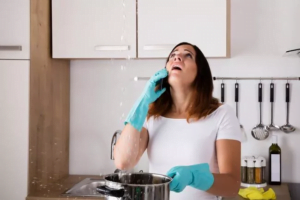Having a Swimming pool of your own is fun, especially for little kids but they do come with risks. It is essential that every precaution is taken to keep you and your family safe.
Fencing for a swimming pool is not only mandatory but they save lives. Throughout this article we’ll answer some common questions and discuss everything you need to know about pool fencing.
Why Should I Have a Pool Fence?
An unfenced pool poses a major threat to children especially those who are not confident swimmers. A quality pool fence is an adequate way to restrict access to the pool and reduce the risk of falls and slips.
Do I Have to Have a Pool Fence?
In short, yes. The building code in Australia states that all pools, both above ground and in ground must have a pool fence.
Different states and territories vary in their rules and regulations regarding pool fencing; however, the Australian Standard still applies in many states.
Can an Existing Fence Line Be Used as A Part of My Pool Fencing?
Yes, you can however it must meet certain safety regulations. It must be at least 1800mm in height.
If it has vertical bars, they must not be more than 100mm apart. If it has horizontal bars, they cannot be less than 900mm apart.
How Deep Can My Pool Be without A Pool Fence?
Any body of water including blow pools, inground and above ground pools that are deeper than 300mm require a pool fence.
Queensland Building and Construction Commission State that Pool Fencing Must Be:
- 1.2 meters high from the ground if it is a boundary fence it must be 1.8 meters high
- If there are holes in the fencing, they cannot be bigger than 13mm
- Horizontal bars should be at least 900m apart
- The fencing needs to be in good condition with no damage or holes
- There cannot be a gap of more than 100mm from the ground to the start of the fence
- Support struts or vertical bars should not have a space of more than 100mm between them
Windows and Gates
- Latches need to be 1.5m above the ground
- Gates should open away from the direction of the pool
- Windows need to have secure lock in place, and they cannot open more than 100mm
- Gates should be fitted with a self-latching system
- Gates should be fitted with a unidirectional self-closing mechanism
A Non-Climbable Zone
A non-climbable zone is the area around your pool fencing that should be free of anything that can be used to climb on by young children or animals. This area should be measured in an arc-shape and should be at least 900mm.
There should be a gap on the pool side of at least 300mm between the pool fence and the pool. Placing things such as rocks, trees, pot plants in the non-climbable zone is a hazard.
Certificate of Compliance
Once your pool fencing has been examined by a council provider or private certifier and passing the standards in place you will be issued a certificate of compliance. If your pool fence inspection fails to meet any of the standards, the inspector will provide feedback on the areas that need to be addressed to pass.
It’s a good idea to get the inspectors advice in writing so you can easily translate this to the pool builder. Once your pool fence is compliant with the current laws in place, it should be maintained by a professional.
You can check the status of your pool fencing certificate of compliance via the Queensland Building and Construction Commission website.
CPR Signage
In serious cases, CPR can be the difference between life and death. Compliant signage should be placed in a central area close to the pool.
It provides information on the DRSABCD steps and an accurate description on how to perform.
Pool fencing regulations are constantly being updated to improve water safety. It’s a good idea to check the current regulations for your state or territory on a regular basis.
Pool Fence Options
When designing a pool, the size and design are generally the first things that come to peoples mind when envisioning their pool.
Although it’s important to factor in the pool fence as they are a necessary part of pool ownership. Some believe that a pool fence detracts from the overall aesthetics of the pool area, however they are a mandatory requirement.
When it comes to finding a pool for your place, the first consideration should be its safety then the design. You can then explore your options that are within your budget to suit the design of your pool area. Contacting A Brisbane Fibreglass Pool Installer to assist in choosing the correct fencing is a crucial part of the process.
Pool fences can be made with any type of material you’d like, it just has to comply with the regulations that are in place in your local area. Your pool fence shouldn’t have sharp edges or anything projecting off it.
You have a few choices when it comes to the style of your pool fence. The two most popular options include:
Aluminium
Aluminium fencing is a popular pool fencing option as it is strong, durable, and low maintenance.
Pros
- Cost effective
- Rust and fade resistant. It doesn’t need repainting or resurfacing
- Long lasting
Cons
- Obstructs the view of the pool
- Can collect spiderwebs and dirt
- Not as aesthetically appealing as glass
Glass
Glass pool fencing is often chosen as it is durable and is suited to all types of homes.
Pros
- Aesthetically appealing
- Durable
- Doesn’t obstruct the view of the pool
Cons
- Requires regular cleaning
- No privacy
- Limits air flow into pool area
Even with a compliant pool fence installation your swimming pool still poses risks.
To ensure that you and your family are always safe, it is important to follow these guidelines issued by SPASA:
- Never leave children unsupervised in the pool area, regardless of their swimming abilities
- Avoid placing furniture and other items near the pool area
- Place a ‘no diving” sign in your pool area if it is too shallow to dive in
- Avoid drinking alcohol near the water
- Place CPR sign in a highly visible location in your pool area
- Take your children to swimming lessons
- Consider learning CPR
- Ensure your pool fence is compliant
Designing Your Pool Fence Is Just as Important as Designing Your Pool
Knowing what the pool regulations are in your state before starting the design process of your pool will allow you to create an appealing pool that is also highly functional and safe.
By knowing the pool fencing rules that are in place, you can design it to tie in cohesively with the design of your pool and the existing layout of your home.
It is also essential to ensure that it complies with the pool fencing regulations in your area to avoid financial penalty. If you are unsure of your pool fencing requirements, give your licensed builder a call, they can confirm the regulations that are applicable in your state or territory.
Our team here at The Fibreglass Pool Company have many years installing stunning fibreglass pools. Our pools are constructed to a superior standard and meet legal compliance requirements.
Contact our experienced team today to discuss your swimming pool fencing requirements. We are more than happy to assist in any way we can.


